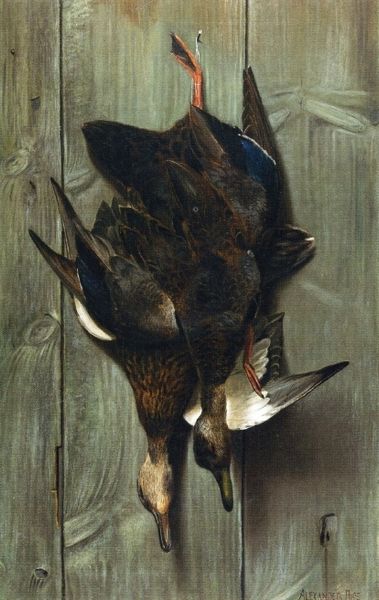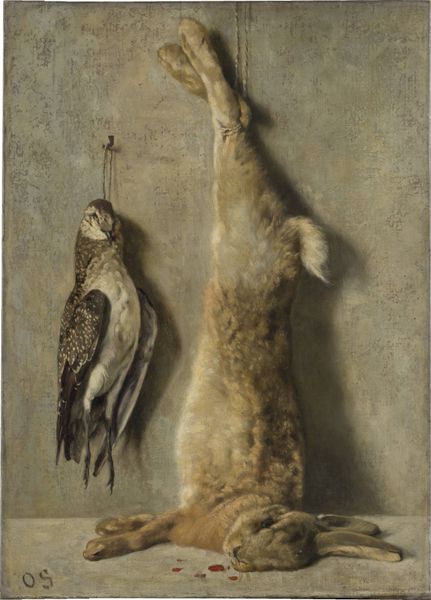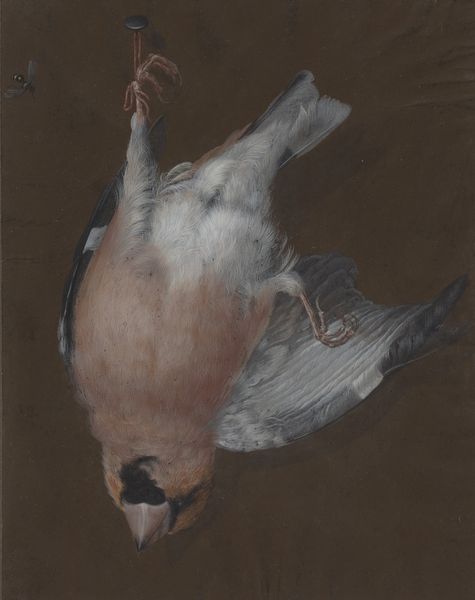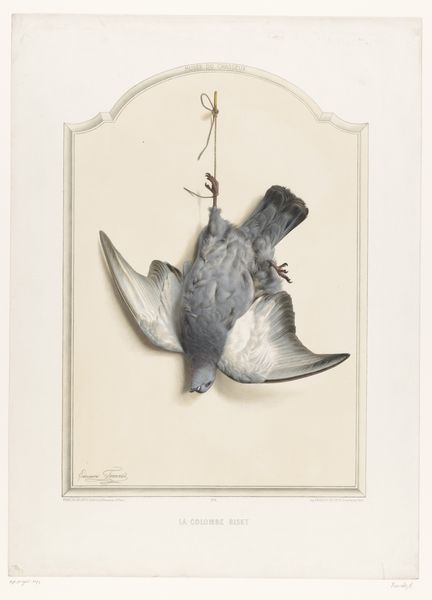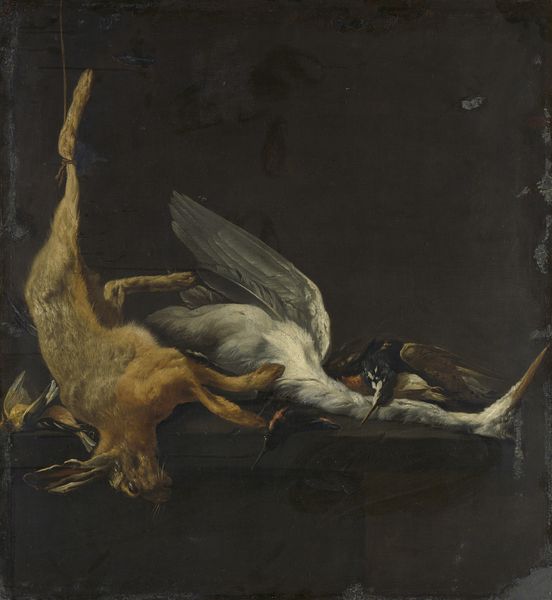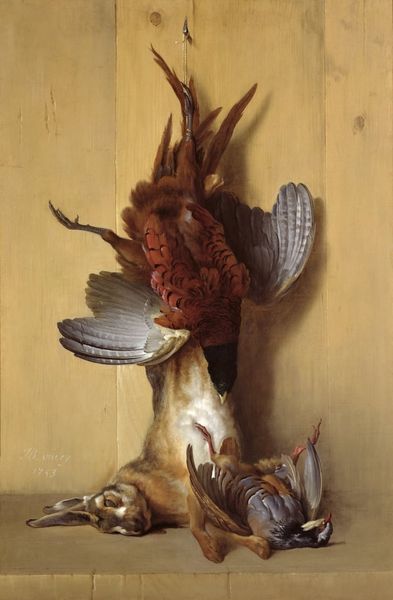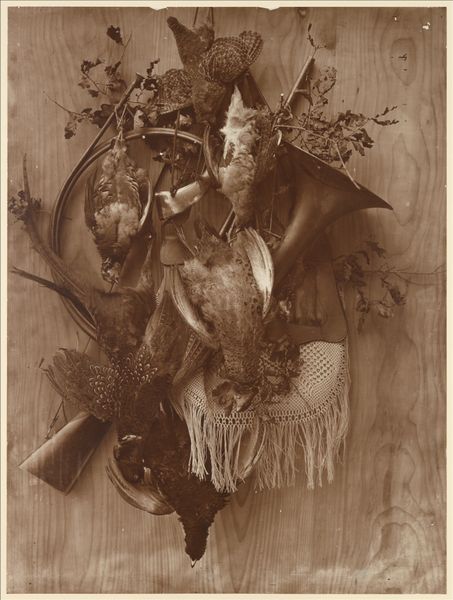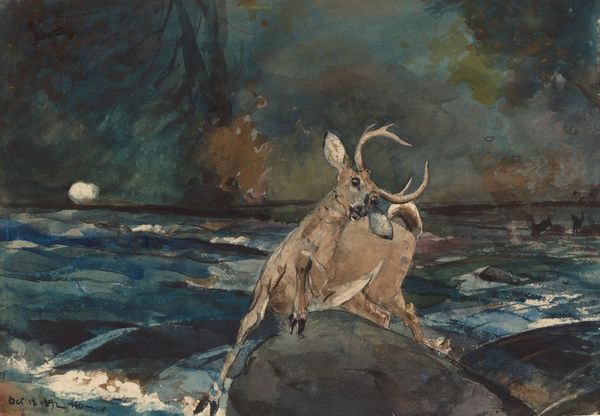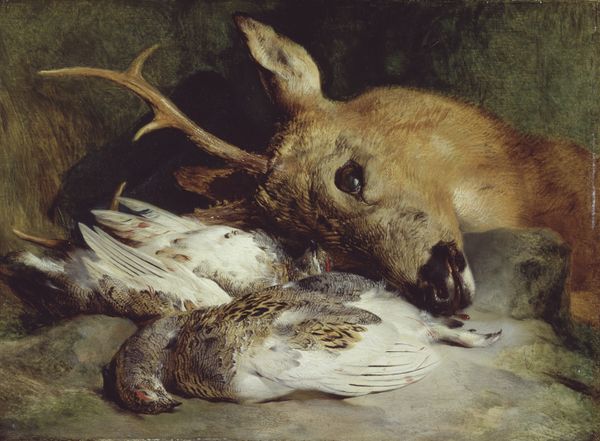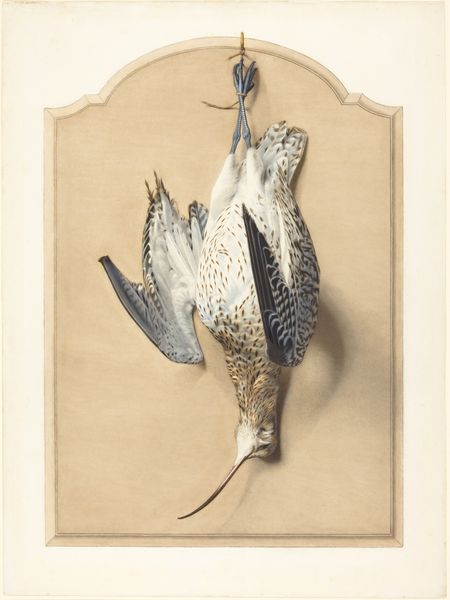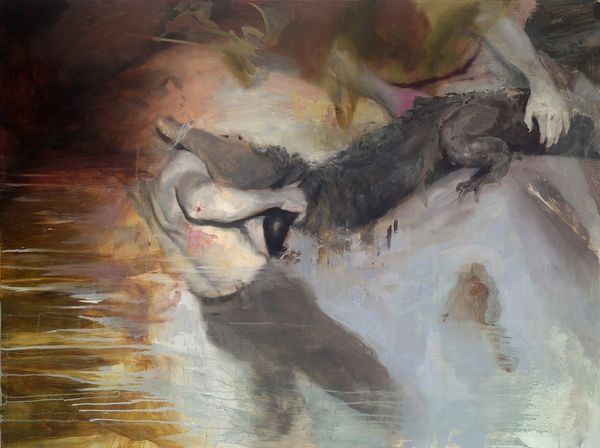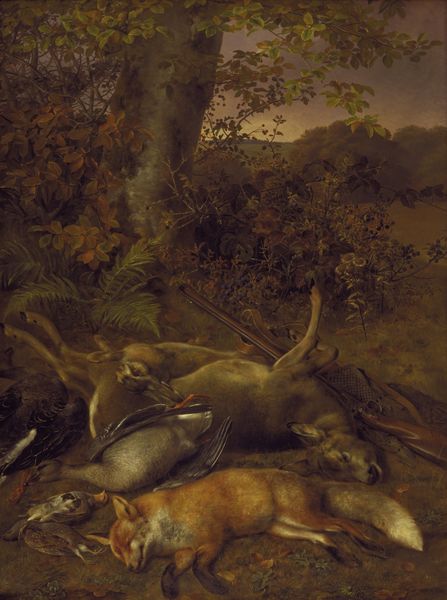
painting, oil-paint
#
painting
#
oil-paint
#
animal portrait
#
academic-art
#
realism
Dimensions: 81 cm (height) x 60 cm (width) (Netto), 99.5 cm (height) x 78.8 cm (width) x 7 cm (depth) (Brutto)
Curator: Let's delve into this captivating oil painting, "Game. A Pheasant and an Eider," created in 1846 by J.L. Jensen. It currently resides here at the SMK, the National Gallery of Denmark. Editor: Immediately, the somber tonality strikes me, coupled with the contrasting textures of the feathers. There's a real sense of stillness, of suspended animation. Curator: Indeed. Jensen’s work exemplifies the artistic style known as academic art and draws strongly from the traditions of realism. The production values are meticulous. The precise brushstrokes and the life-like depiction of the birds speaks to the skill required to reproduce these images. We might also ask, what function would this artwork perform for a late-19th century consumer? Editor: Semiotically, the downward posture of the birds projects both fragility and a distinct compositional order. There’s a carefully orchestrated asymmetry. I am especially captivated by the almost photographic clarity in rendering their plumage. Curator: Looking at the larger context, the artwork could act as a signal to prosperity and power and demonstrates a keen interest in the materiality of objects and living beings as products. Did the consumer eat the birds afterwards? Did this symbol represent something about Denmark, a claim to it through painting what the people are assumed to consume? Editor: Interesting point. We could view the birds themselves as objects of a particular visual experience—objects transformed through their arrangement and meticulous rendering into pure form. There’s also a strange allure about it. This almost feels like portraiture despite being ostensibly just of dead fowl. Curator: Perhaps by analyzing its creation and original consumption, we can move past appreciating this oil painting for its purely aesthetic beauty and towards an interrogation of art making itself. Editor: I still find its inherent visual construction fascinating, prompting reflection on perception and artistic representation, while, to your point, not neglecting that these are very pointed symbolic references. Curator: A fitting intersection of form and context to leave our listeners with. Editor: Absolutely, a point well hunted, Curator.
Comments
No comments
Be the first to comment and join the conversation on the ultimate creative platform.
